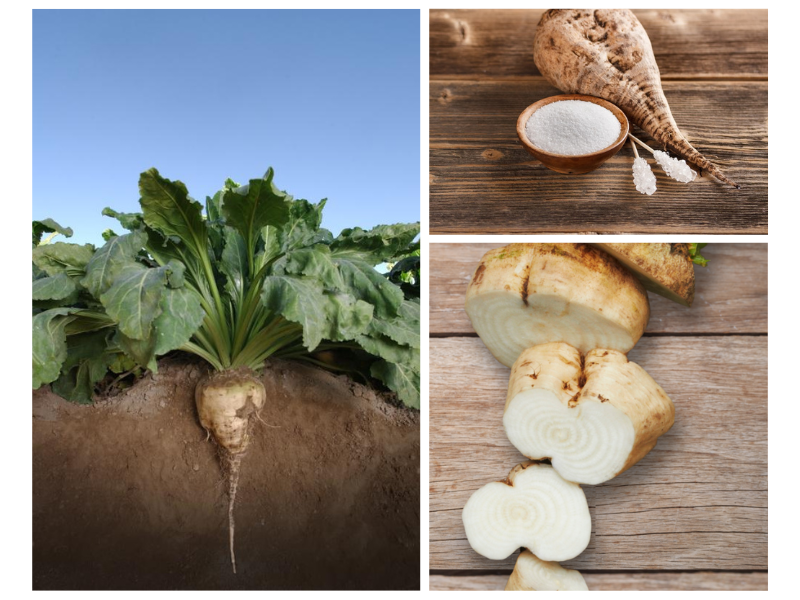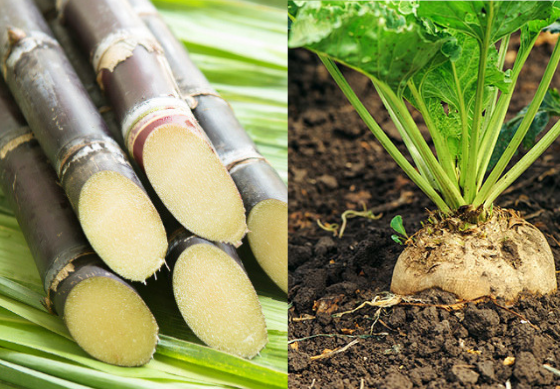The Ultimate Contrast: Beet Sugar vs. Cane Sugar Explained
The contrast between beet sugar and cane sugar provides a fascinating expedition of 2 predominant sugar in the cooking world. While both sugars share an usual make-up of sucrose, their origins, processing approaches, and flavor profiles deviate substantially.
Origins of Sugar Resources
The beginnings of sugar sources are largely rooted in 2 distinctive plants: the sugar beet and the sugar cane. Sugar cane, an exotic lawn belonging to Southeast Asia, has actually been cultivated for over 2,500 years. Historically, it was initial tamed in New Guinea and later infected India, where it became an integral component of the culture and economic situation. The process of removing sugar from cane came to be well-established, causing its prestige in trade during the Middle Ages.
On the other hand, sugar beet is a fairly contemporary resource, developed in Europe throughout the late 18th century as an action to sugar cane scarcities. The plant grows in warm environments, making it suitable for growing in areas such as France and Germany. The successful removal of sugar from beetss noted a significant agricultural innovation, as it supplied an alternative to cane sugar, specifically throughout periods of trade disturbance.
Both plants have played vital roles fit the international sugar industry. Their unique development environments and historical contexts show the variety of sugar resources, inevitably affecting local farming practices and financial development.

Handling Techniques Described
Different processing approaches are utilized to draw out sugar from both sugar beet and sugar cane, each customized to the particular characteristics of the resource material. In the case of sugar beetss, the process starts by harvesting the origin and then cleaning it to get rid of dirt and contaminations.
Alternatively, sugar cane processing entails a different approach. Initially, the cane is collected and mechanically squashed to draw out the juice. This juice is after that clarified, typically utilizing heat and lime, to get rid of contaminations. The cleared up juice is focused with dissipation, similar to beet sugar handling, before formation occurs. Both procedures finish in the production of raw sugar, which might undergo additional refining to attain the desired purity and top quality. Despite the distinctions in their first processing stages, completion items are largely comparable, resulting in sugar that is chemically equivalent.
Nutritional Differences

When contrasting beet sugar and cane sugar, notable nutritional differences emerge, though they are frequently subtle. Both types of sugar are mainly composed of sucrose, supplying about the very same calorie web content-- about 4 calories per gram. The differences lie in their trace mineral material and the presence of particular substances that might have very little nutritional implications.
Beet sugar has tiny amounts of potassium, calcium, and iron, while cane sugar usually provides slightly greater concentrations of these minerals. Additionally, cane sugar may retain even more natural molasses during handling, which can add to trace quantities of anti-oxidants and other beneficial substances. This is especially true for much less refined selections, such as raw cane sugar.
Regardless of these distinctions, both beet and cane sugars are primarily composed of basic carbohydrates, with a high glycemic index, bring about similar effects on blood sugar level levels. While there are small nutritional differences, the general wellness impact of eating either kind in moderation continues to be largely comparable. Individuals seeking to decrease sugar intake for wellness reasons ought to take into consideration both forms with equivalent scrutiny, concentrating on general nutritional patterns instead of the source of sugar
Preference Profiles Compared
Taste profiles of beet sugar and cane sugar display unique features that can affect their cooking applications. Cane sugar, commonly regarded as having a much more complicated, nuanced sweet taste, is acquired from the tall turf of the sugar cane plant.
In comparison, beet sugar, removed from sugar beetss, is known for its cleaner, more simple sweetness. This high quality right here makes it especially appropriate for recipes needing a neutral artificial sweetener that enables other flavors to radiate. Some cooking professionals suggest that beet sugar may leave a slightly natural aftertaste, which can be unwanted in fragile treats.
In addition, the assumption of sweet taste intensity varies in between both, with some cups recognizing cane sugar as sweeter compared to beet sugar at equal dimensions. Inevitably, the option between beet and cane sugar may rely on the specific application, with each sugar offering unique attributes that can boost or enhance different meals. Understanding these differences enables notified decisions in culinary techniques.

Ecological Impact
The ecological influence of sugar production-- whether from beet or cane-- has amassed enhancing focus in the last few years because of its implications for sustainability and environmental health. Both sugar sources show distinct ecological impacts, influenced by agricultural techniques, land use, and resource intake.
Cane sugar production commonly necessitates huge areas of tropical land, which can bring about deforestation and loss of biodiversity. Furthermore, the farming of sugarcane is frequently connected with high water use and substantial pesticide and fertilizer application, adding to dirt destruction and water pollution.
Alternatively, beet sugar is mostly grown in temperate regions, usually calling for much less water and land. Its growing can still entail the usage of chemical inputs, affecting local ecosystems. Moreover, the energy-intensive handling of beet sugar can add to greenhouse gas emissions.
Sustainable farming practices and developments in innovation are necessary for minimizing the ecological influences of sugar manufacturing. Organic farming approaches, incorporated bug administration, and effective water usage can improve the sustainability of both beet and cane sugar industries, ultimately leading to a lowered eco-friendly impact and more info here a much healthier world.
Conclusion
In summary, the contrast between beet sugar and cane sugar highlights both similarities and distinctions that influence their application. Cane sugar is identified by its complicated sweetness, while beet sugar presents an extra simple taste.
The beginnings of sugar sources are mostly rooted in 2 distinct plants: the sugar beet and the sugar cane.Different processing approaches are utilized to remove sugar from both sugar beet and sugar cane, each tailored to the details qualities of the resource product.Beet sugar consists of tiny amounts of potassium, iron, and calcium, while cane sugar my blog usually supplies slightly higher focus of these minerals.Regardless of these distinctions, both beet and cane sugars are predominantly made up of easy carbohydrates, with a high glycemic index, leading to comparable results on blood sugar levels. Cane sugar, frequently viewed as having an extra intricate, nuanced sweetness, is derived from the tall lawn of the sugar cane plant.